The American Pit Bull Terrier is a breed known for its athleticism, courage, and intelligence. These companion dogs are very loyal and loving to their family members. It is a breed that is often unfairly discriminated against in the media, but anyone who has owned an American Pit Bull Terrier knows what an amazing breed this is. In fact, the American Temperament Test Society rated American Pit Bull Terriers as one the most stable dog breeds in the world, taking the #2 spot; just below Labrador Retrievers. According to the ATTS, Pit Bulls even outscored breeds like Golden Retrievers for example. This is based on a series of temperament tests carried out on literally thousands of dogs from a wide variety of breeds to scientifically test their stability. There were nearly a thousand Pit Bulls alone (not including other breeds) that were tested in their studies.
The name “Pit Bull” in this article refers to American Pit Bull Terriers themselves, not the overgeneralization of the term used in the media (as the term “Pit Bull” is often applied by the media to multiple working breeds and mixes). We see and hear too many headlines with the phrase “Pit Bull” being used and rarely is the breed verified through actual kennel club registration. This paints an unfair picture of the breed when other breeds and mixes are mistakenly identified as American Pit Bull Terriers. Many of the dogs involved in these stories come from homes where they are severely neglected and abused by their owners or previous owners. Real American Pit Bull Terriers raised in loving homes make great family companions and are known for being very loyal to their family members.
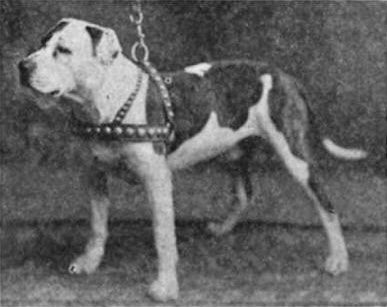
In order to understand the history of the American Pit Bull Terrier, we must go back to the United Kingdom and talk about the original Bulldog of England. The original Bulldog was a strong and athletic dog that was used in bull-baiting and other blood sports in England; dating back to at least the 1600s. This dog is referred to as the Old English Bulldog. When new laws were passed outlawing bullbaiting, dog men started breeding for different traits. The type that would help these dogs excel in the pit for a new type of combat: dog vs. dog. In an effort to bring a little more speed and tenacity into the ring, many breeders started crossing Bulldogs and Terriers.
These bull and terrier crosses came from the Old English Bulldogs and Terriers of England in the early to mid 1800’s. The early Terriers of England are also now referred to as Old English Terriers. This name is associated with a few different types; like for instance the Black and Tan Terrier, Black Terrier, and the White Terrier. There is some disagreement on which types of terriers the early Bull-and-Terriers were crossed with, but it is said that there were terriers of a variety of colors during this time period. According to authors of the time (such as Francis Butler who lived from 1810-1877), there were Terriers with black, yellow, red, black-and-tan, and gray colored coats (often referred to as blue) present in the UK in the 1800s.

The terriers of the early 1800s were considered to be fast, agile, and tenacious. They had a lot of drive. This is why so many terriers were used as rat dogs, and to catch other vermin. Many dog men of the time believed that mixing terrier blood in their lines, would create a superior dog; with the courage of the Old English Bulldog and speed of the Old English Terrier. When the Cruelty to Animals Act 1835 came out in the United Kingdom, a lot of these breeders wanted a dog that was better suited for dogfighting. This may have been because it was easier to run underground events with dogfighting than bull, bear, or lion-baiting. The name given to these early bull and terrier crosses was the Bull-and-Terrier.

From these early Bull-and-Terriers came breeds like: the Standard Bull Terrier (recognized by the AKC in 1885, although this breed was mixed with a few other breeds), the Boston Terrier (recognized by the AKC in 1893, but it was also partially mixed with other breeds), the American Pit Bull Terrier (recognized by the UKC in 1898), the Staffordshire Bull Terrier (recognized by the Kennel Club of the United Kingdom in 1935 and then by the AKC in 1974), the American Staffordshire Terrier (recognized by the AKC in 1936), and more recently the American Bully (first recognized by the ABKC in 2004 and then by the UKC in 2013).
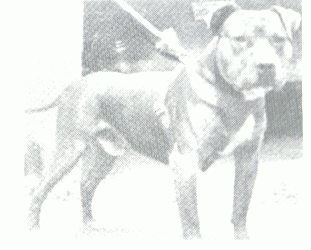
The second largest kennel club in the US is the United Kennel Club (UKC). Chauncey Bennett started the UKC in 1898 as an alternative to other Kennel Clubs available at that time. The first dog ever registered in the UKC was his American Pit Bull Terrier; Bennett’s Ring in 1898 (UKC Registration No. 1). Bennett founded a kennel club that primarily focused on the working breeds, and what they could be trained to do. Other kennel clubs at the time were said to have been more focused on conformation, rather than the working ability of the dog. Bennett on the other hand, had a true appreciation for a dog’s strength, speed, and intelligence; and he wanted recognize those practical qualities that give a working dog a purpose. Of course, it never hurt a dog to be both good looking and functional.
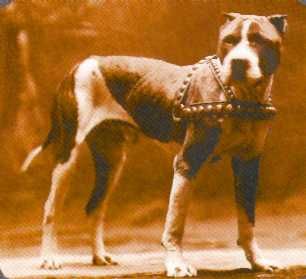
In the early years, the American Pit Bull Terrier (APBT) was used primarily for dog fighting events linked to gambling. Pit bulls excelled in this arena. The extremely loyal nature of the APBTs, gave them a strong desire to please their owners and perform. The dogs’ owners would train them for these fights and expected them to fight fearlessly. Through selective breeding, they created a breed of dogs that had a strong desire to please and a lot of drive.
These dogs had what they referred to as “gameness.” A “game” dog would continue to fight even when severely injured; sadly sometimes to the death. These dog dealers were abusing this desire to please, and using it for profit. Fortunately dogfighting was eventually outlawed in the United States in 1976. While we know that not all APBT owners in the early years of this breed took part in this cruel sport, there were too many that did.

Their Bull-and-Terrier predecessors in England, were used for the very same purpose. They had been involved in British bloodsports dating back to the early 1800’s. Dog men started importing Bull-and-Terriers to the United States from England and Ireland around the mid 1800’s. These bulldog and terrier crosses, created the foundation stock for the American Pit Bull Terrier. In England and Ireland there were a few notable regions where breeders had created their own classes of Bull-and-Terriers. The dogs that became the American Pit Bull Terrier, came from these regions where the Bull-and-Terriers were being bred.
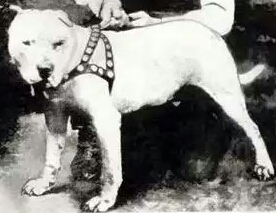
One of the most notable Bull-and-Terrier regions in the United Kingdom was an area known as Cradley Heath. The bull and terrier crosses in Cradley Heath, have been there since the early 1800’s. Due to their history in dogfighting, the Kennel Club of the United Kingdom was reluctant to recognize the breed. It was not until 1935 (more than 100 years after the creation of the first bull and terrier crosses) that the Kennel Club of England allowed them into their registration books.
The name chosen for this Cradley Heath type of Bull-and-Terrier, was the Staffordshire Bull Terrier. There was a considerable amount of these “Cradley Heath Bull-and-Terriers” imported to the United States starting in the 1880’s and maybe even as early as the mid 1800’s. American Pit Bull Terriers descend from the Cradley Heath type of Bull-and-Terriers of Staffordshire (now known as Staffordshire Bull Terriers) and also from other Bull-and-Terrier lines imported from Ireland. Modern day Staffordshire Bull Terriers share a resemblance to many modern APBTs, but they are shorter and lighter than most APBTs.
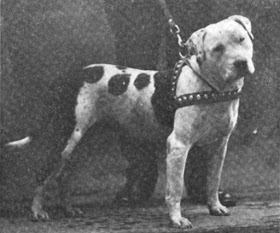
The American Pit Bull Terrier was the first pure Bull-and-Terrier breed to be recognized by a major kennel club; even before the Staffordshire Bull Terrier. As mentioned earlier, they were officially recognized by the UKC in 1898. The English Bull Terrier though, was the first dog of Bull-and-Terrier descent to recognized by a major kennel club when they were accepted into the AKC in 1885. These Bull Terriers were mixed though with other types of dogs and were not of pure Bull-and-Terrier stock. The other breeds used in their creation gave them a very distinct look of their own. More Bull-and-Terrier blood was reintroduced back into the English Bull Terrier lines a few decades after Hinks created them; in an effort to improve the breed. Boston Terriers were actually the second breed of Bull-and-Terrier descent recognized by a major kennel club. As stated before, they were first recognized by the AKC in 1893, but are also not of pure Bull-and Terrier stock. So the American Pit Bull Terrier was the only pure Bull-and-Terrier breed to be officially recognized by a prominent kennel club in the 1800s.
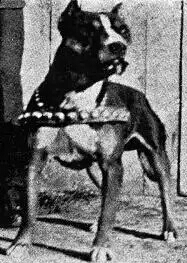
The American Staffordshire Terrier, was originally created from select UKC American Pit Bull Terriers; by breeders that were seeking AKC recognition for American Pit Bull Terriers. The AKC did not approve of the dogfighting history of the breed, nor did they approve of the word “Pit” in its name. In attempt to create a new image for the breed, the name had to be changed. In the beginning, many supported keeping the original name and just removing the word “Pit” from it. The founders of the breed were requesting to register them in the AKC as American Bull Terriers, but they could not get full approval.
Too many people felt this name was too similar to the Bull Terrier name, so they decided to use the name Staffordshire Terrier (later changed to American Staffordshire Terrier in 1972). These American Pit Bull Terriers had a certain look and traits. The founders were very selective in the APBT (American Pit Bull Terrier) dogs they chose to create this new AKC breed. So the founding stock chosen and continued selective breeding eventually gave the breed a unique appearance. It is important to note however, that the American Staffordshire Terrier breed did in fact originate from purebred UKC American Pit Bull Terriers.
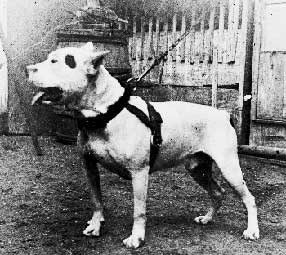
In the 1990s, some breeders wanted to create a unique look for the modern American Pit Bull Terrier and starting breeding for a more robust looking dog. From these breedings came a stockier Pit Bull that eventually became known as the American Bully. A style of Pit Bull that was recognized as its own breed by the ABKC in 2004 and the UKC in 2013. Not every breeder chose to switch their heavier built Pit Bulls into this new UKC breed name. Many instead opted to keep their original name and breed classification; as American Pit Bull Terriers. A considerable amount of breeders that kept the APBT name with the UKC, decided to register their dogs with the ABKC as American Bullies; providing dual registration for the dogs.
This was also the case with many American Staffordshire Terrier breeders (many of them kept their dogs dual registered as AKC American Staffordshire Terriers while staying registered with the UKC as American Pit Bull Terriers). The dogs used to create this muscled up style of Pit Bull, were purebred UKC American Pit Bull Terriers and AKC American Staffordshire Terriers (remember the AmStaffs came from purebred UKC APBT stock). So the original American Bullies should also be of purebred American Pit Bull Terrier stock. The most well known dogs that were used to create the American Bully were either registered as purebred UKC American Pit Bull Terriers or as AKC American Staffordshire Terriers.
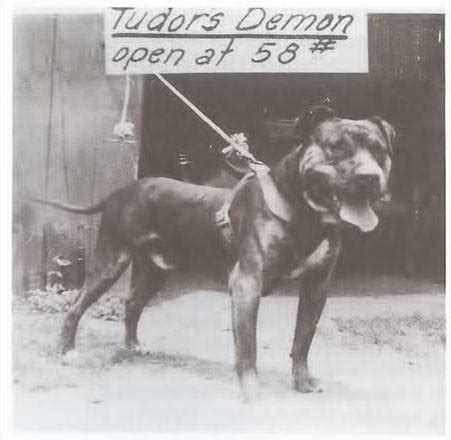
Breeders on both the West coast and East coast, were breeding for this stronger and more heavier look under the American Pit Bull Terrier banner. The most notable breeders involved in the American Bully movement can be found in our other articles. It is worth mentioning that there are now 4 classes of American Bully recognized by the ABKC; Pocket, Standard, Classic, and XL. There are also breeders that breed Micro Bullies, Extreme, and XXL. These last three classes are not recognized by the ABKC. A lot of newer American Bully blood in the Pocket, Standard, and XL classes are rumored to have some English Bulldog, American Bulldog, or various types of Mastiff blood.
This may have been done to cater to the look some breeders were trying achieve in each class. It is important to note that the early breeders (that worked to create this new American Bully breed) were said to have used only UKC American Pit Bull Terrier and AKC American Staffordshire Terrier blood. If you can find an APBT or American Bully with older blood (from the founding lines of the American Bully), then it most likely comes from purebred UKC American Pit Bull Terrier and AKC American Staffordshire Terrier stock.
So if your Pit Bull comes from one of the founding lines of the American Bully, then it will most likely still look like a heavy-boned muscled up American Pit Bull Terrier or American Staffordshire Terrier. These American Pit Bull Terriers should have broader chests, more muscular heads, thicker necks, and greater overall mass than Pit Bulls from other lines; while still maintaining the athleticism that these dogs were originally intended to have.
It is interesting to see the different looks that the Bull-and-Terrier has taken due to selective breeding and the new breeds that have been created from it. Each of the Bull-and-Terrier breeds have a unique look now. A lot of ADBA type Pit Bulls tend to be a little thinner and taller, but are known to be extremely athletic and strong. The UKC Pit Bull lines that were used to create the American Bully are very muscular and have a lot of mass; the Classic class of American Bully seems to have retained most of the athleticism while adding a little more strength and weight. American Staffordshire Terriers have strong jaw muscles and thick necks like the Classic class of American Bully, but are a taller and a little bit thinner. Staffordshire Bull Terriers have a similar build to the American Pit Bull Terriers used to create the American Bully, but they are shorter and lighter in weight. Whatever line your dog comes from, they are each amazing in their own way. Each of these breeds are very loyal to their owners and would make a wonderful addition to any family.
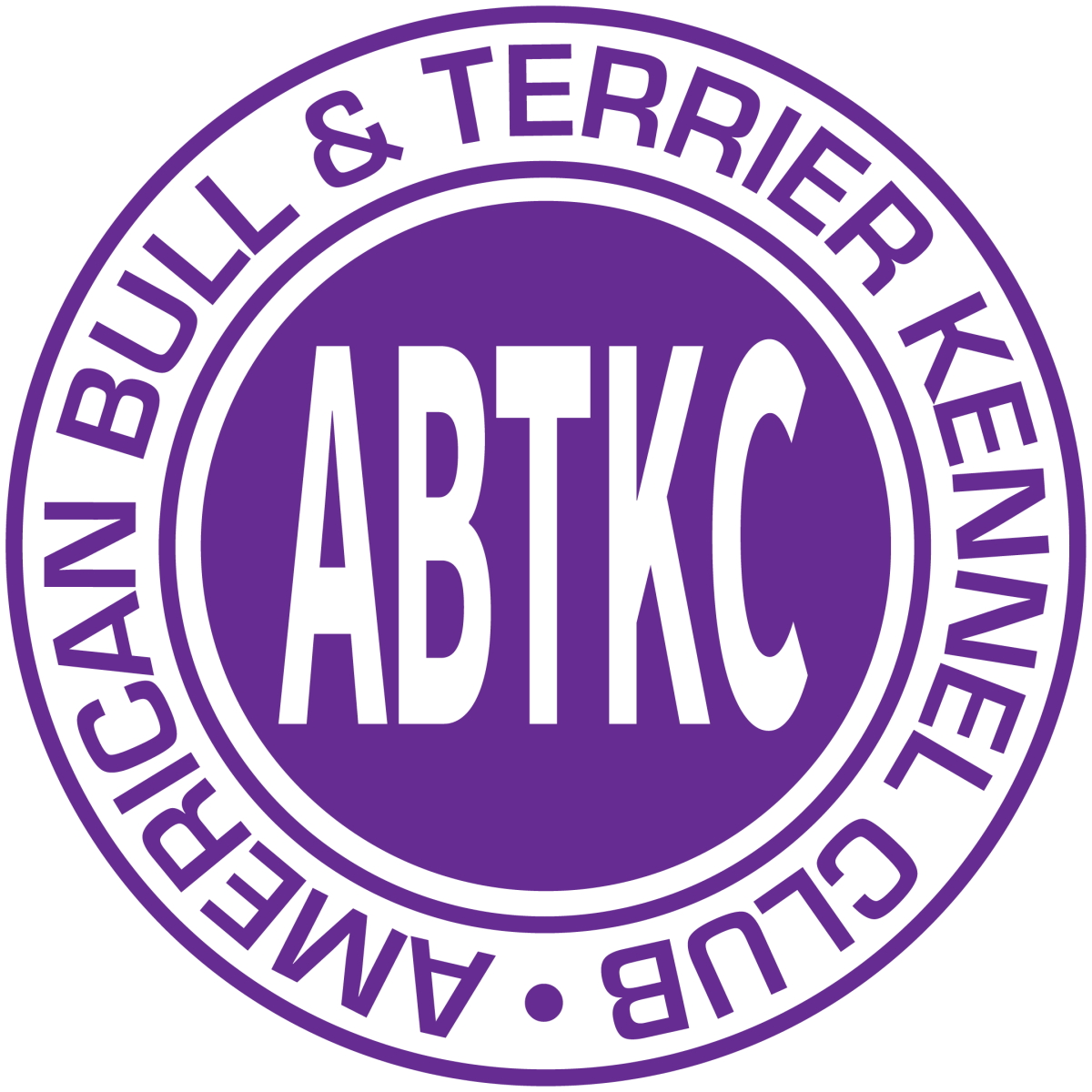
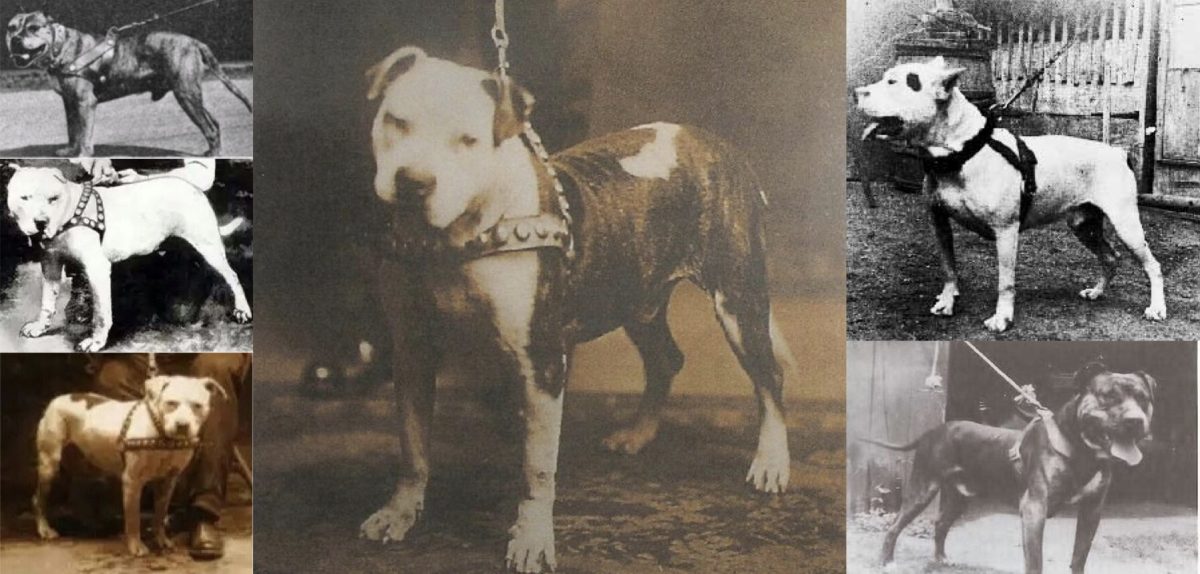
One reply on “The History of the American Pit Bull Terrier”
itstitle
excerptsa